First local drive: 2021 Nissan Leaf e+
There’s an extra 115km of range in the latest addition to the Nissan Leaf lineup, known as the e+.
But there’s a chance some owners will rarely experience the whole 385km EV range.
That’s the prediction from the founder of EV infrastructure provider Jet Charge, Tim Washington.
“Another day of electricity,” is how Washington sees the $10,500 step up from the regular Leaf to the Leaf e+.
With the imminent arrival of hardware to utilise the Leaf and Leaf e+ bi-directional charging capability – allowing electricity to power a house or be fed back into the grid – Washington sees the Leaf e+ as the perfect piece of hardware to power a house.
READ MORE: Full Nissan Leaf e+ review from an overseas drive.

“Why would you have a home battery when you can have literally five times as much capacity [in the car]?” he says.
That’s one reason Washington believes the Leaf e+ makes a viable alternative to home charging solutions such as the Tesla Powerwall.
It’s not quite that simple just yet. Owners will need to fit additional hardware to their house or business. One of the first on offer – once regulatory approval is granted – is the Wallbox Quasar, which is expected to cost about $8000 initially (prices are exected to come down over coming years).
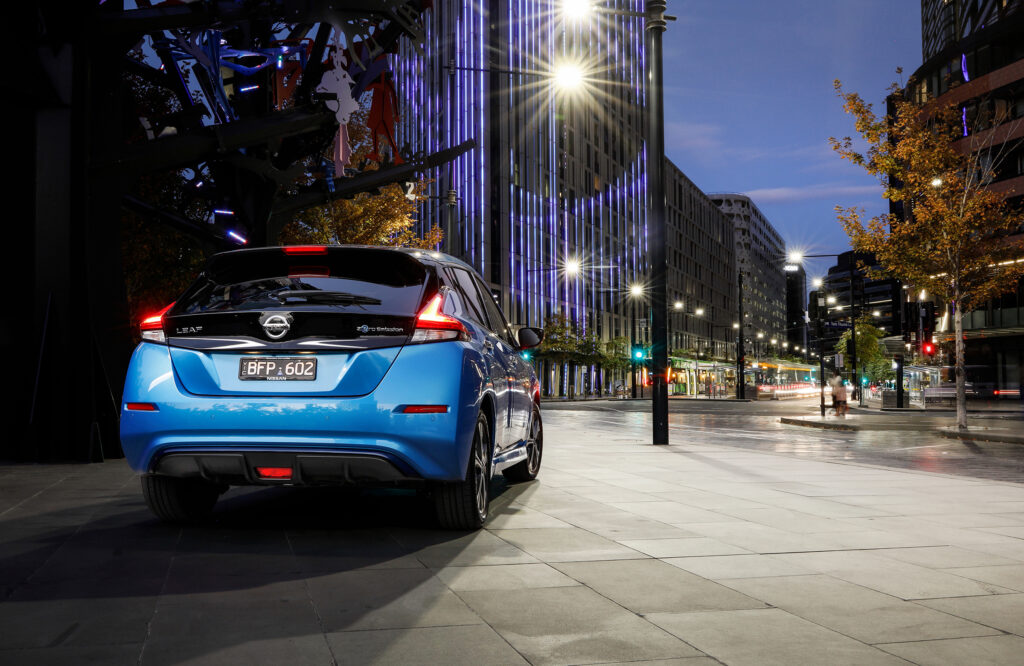
The + to the Leaf
The regular Nissan Leaf is unchanged and still on sale for $49,990 plus on-road costs, making it one of the most affordable EVs on the market.
But with a 40kWh battery and 270km of range it needs more charges than most EVs.
At $60,490 for the Leaf e+ you get a 62kWh battery with 385km of range; only 56kWh of that battery pack is usable.

Washington’s thinking is that some could still get all their daily driving needs while also having loads of home battery storage parked in the driveway at night.
It’s a thought not lost on Nissan Australia, which sees potential for fleets that could use their parked cars to power their factories or offices.
“There are lots of places where that can be now produced at scale,” says Nissan Australia managing director Stephen Lester. “Wwe can be collecting through a solar array energy and then recharging employees’ vehicles or using the energy of employees’ vehicles to run the office.”
All of which gives the Leaf and Leaf e+ a big advantage over most EVs on the market. Currently the Mitsubishi Outlander PHEV is the only other electrified model that can be used for vehicle-to-grid applications.
Leaf v Leaf e+: Spot the difference
Other than the battery there’s very little difference between Leaf and Leaf e+.
Both share the same basic design, although the e+ sits 5mm higher to account for the larger battery pack underneath.
Both have decent interior space, albeit with a higher rear seat impacting back seat headroom for adults. And both have the Bose sound box on the floor of the otherwise spacious boot.

Both get the same alloy wheels and the same five-door hatchback styling.
The main visual difference between the two is a iridescent blue stripe at the lower edge of the bumper on the e+.
Equipment levels are identical, too. Both get the same 17-inch alloy wheels, heated seats, heated steering wheel, sat-nav, leather, 8.0-inch touchscreen with Apple CarPlay and Android Auto, and seven-speaker Bose sound system.


Safety extends to auto braking, blind spot warning, tyre pressure monitors and traffic sign recognition.
There’s only one USB port, though, and no rear air vents. And the foot-operated park brake lives on…
e+ gets more power
Even the electric motor is the same between Leaf and Leaf e+.
However, because the bigger battery can supply more current, the single motor can produce more power.
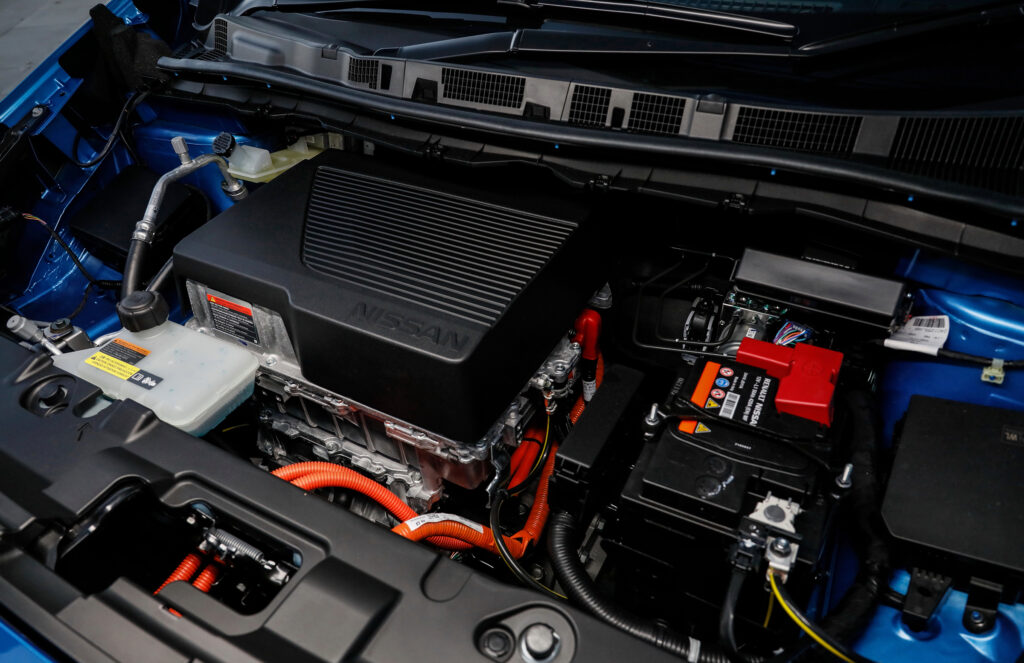
Outputs have increased from 110kW and 320Nm to 160kW and 340Nm.
It’s a big step up and one that significantly steps up the Leaf’s perkiness.
The 0-100km/h time drops by one second to 6.9 seconds.
It makes for zippy around town running and allows faster acceleration on the open road.
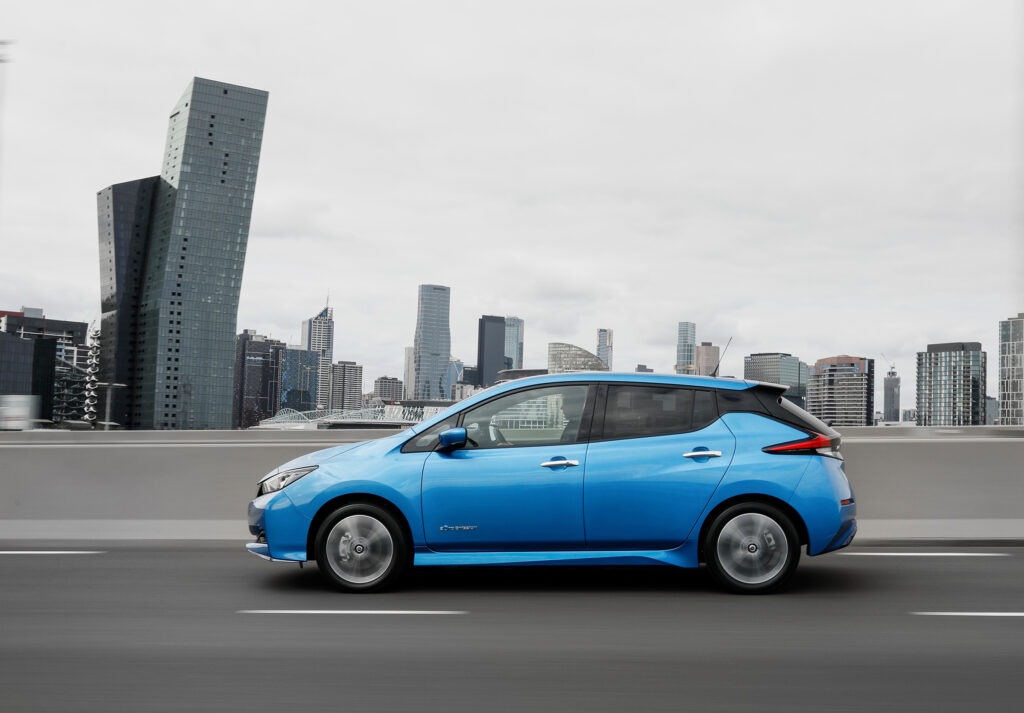
Channeling that newfound grunt through the front wheels does bring in one negative, though: torque steer, whereby accelerating hard while steering at low speeds can pull the car towards the inside of the corner.
It’s the first hint the Leaf is less about dynamic excellence and more about basic motoring.
The suspension is more soft than sharp and the tyres don’t take much provocation to slip if powering out of a tight corner.

That’s in part because of the near-instant responses, something that adds to the Leaf e+’s fun factor.
So, relatively comfortably and day-to-day liveable but far from exciting.
Keeping the electrons flowing
The Leaf e+ maintains the regular Leaf’s dual charging strategy: CHAdeMO for DC charging and Type 2 for AC charging.
That’s because CHAdeMO is currently the only solution for V2G/bi-directional charging.
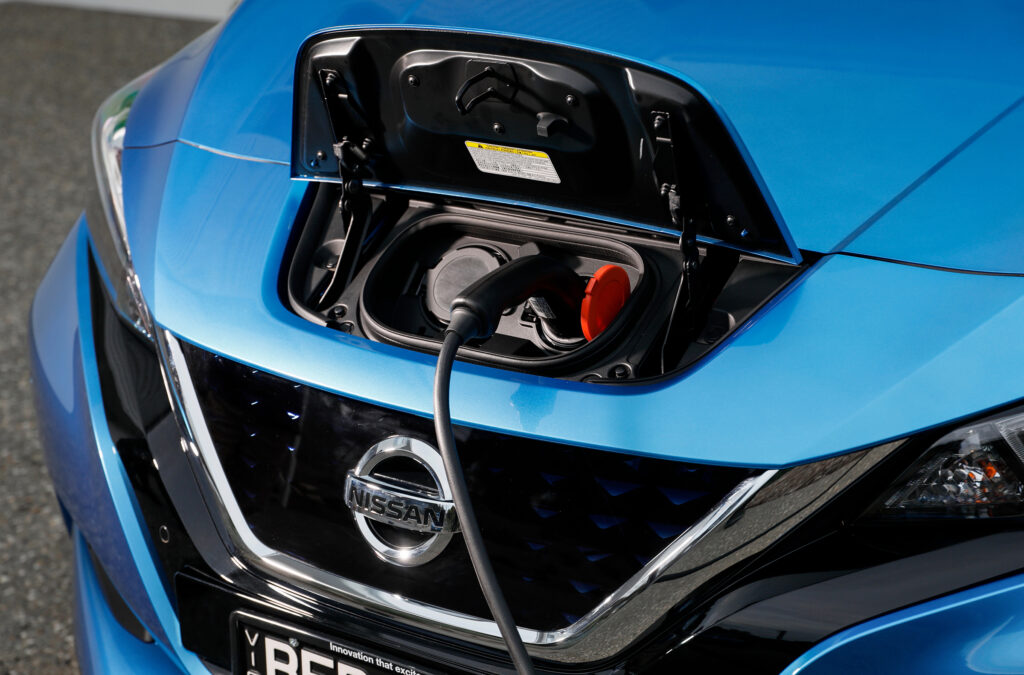
In the e+ the DC charging capability has doubled to 100kW. Even with the larger battery capacity, it lower’s the Leaf’s 60-minute 20-80 percent charge time to 40-45 minutes for the e+ with its larger battery.
AC charging is limited to 6.6kW in both, meaning an 11.5-hour full charge for the e+ when plugged into a wallbox or 32 hours from a home powerpoint.
The bigger battery means the Leaf e+ is also about 140kg heavier than the regular Leaf, something that impacts its efficiency.
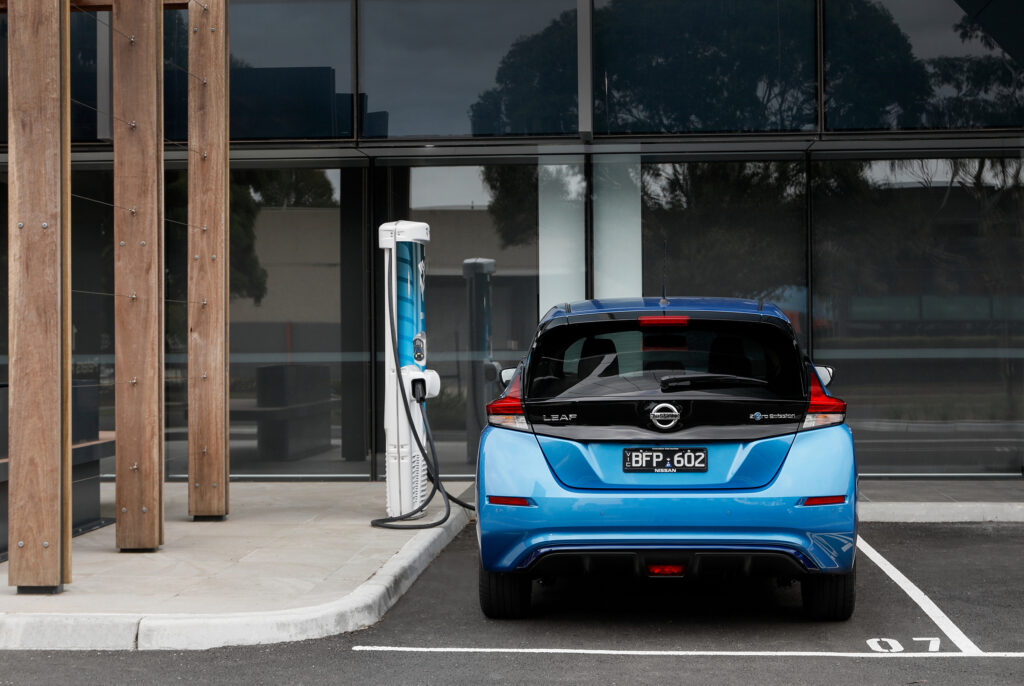
The claimed electricity consumption is 18.0kWh per 100km versus 17.1kWh/100km for the Leaf.
To Leaf or e+
The addition of the Leaf e+ raises the obvious question of whether it’s worth splashing out $10,500 extra for 22kWh of battery capacity over a regular Leaf.
That will depend entirely on how you want to use the car, with longer trips obviously now part of the equation.
But compare it with other vehicles, including the Tesla Model 3 and the decision is less clear. The Model 3 has more range (508km versus 385km) and better acceleration (0-100km/h in 5.6 seconds versus 6.9 seconds) and only costs about $2500 more.
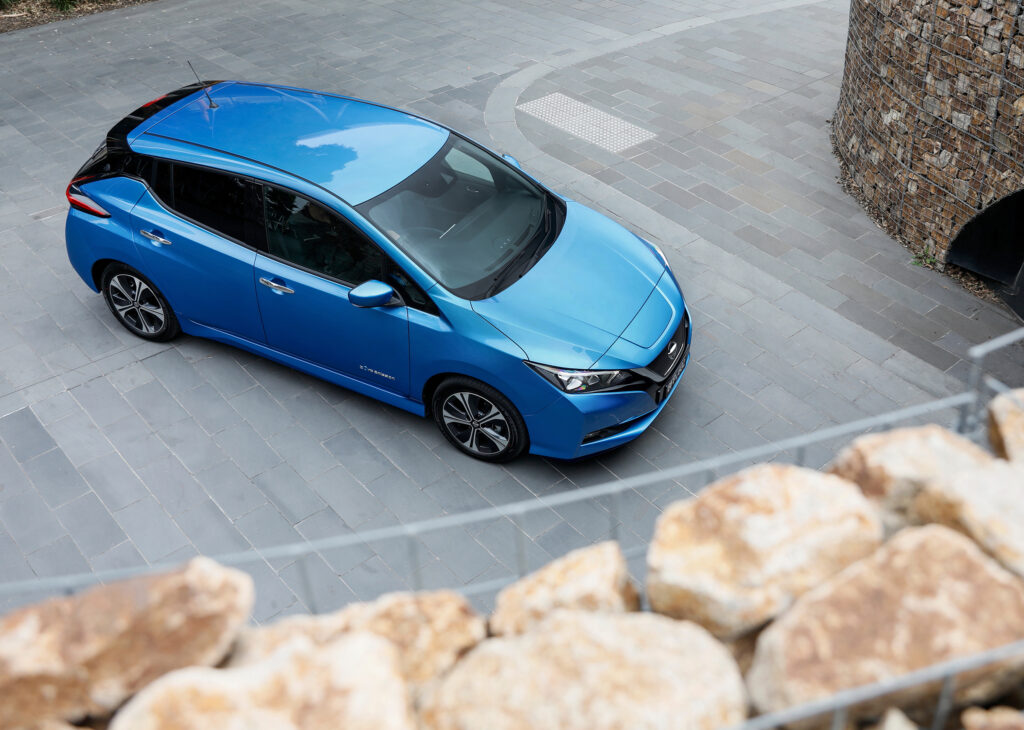
But it’s the V2G or bi-directional charging capability that opens plenty of interesting opportunities beyond driving the car.
Compare the e+’s battery directly with home storage solutions such as a Tesla Powerwall and it’s something of a bargain that happens to include a car as part of the deal.
2021 Nissan Leaf e+ specifications
Price: $60,490 plus on-road costs
Basics: EV, 5 seats, 5 doors, hatchback, front drive
Range: 385km (WLTP)
Battery capacity: 56kWh
Battery warranty: 8 years/160,000km
Energy consumption: 18.0kWh/100km
Motors: 1 front 160kW/340Nm
AC charging: 6.6kW, Type 2 plug
DC charging: 100kW, CHAdeMO plug
0-100km/h: 6.9 seconds

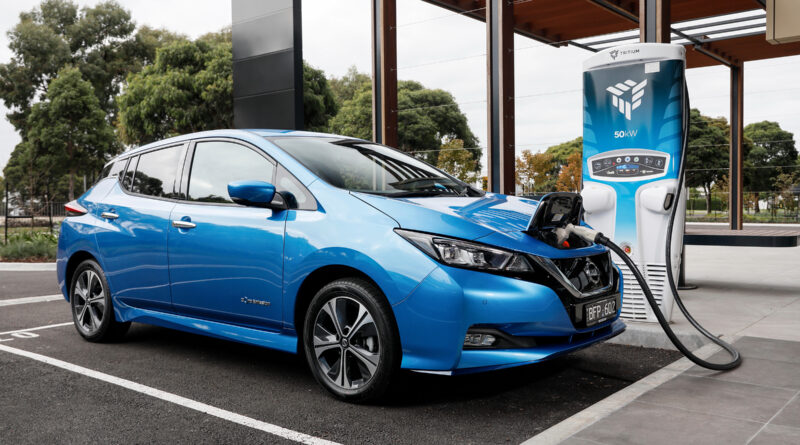

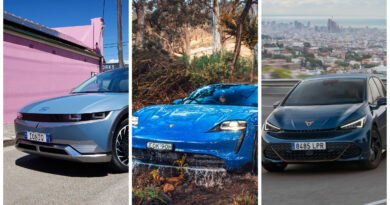
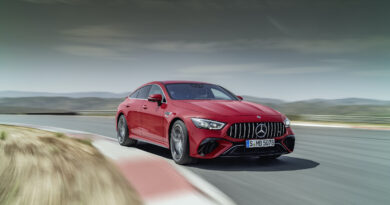
Hi I have a question does the 7 kW charger still work on the Nisan leaf e+ at home?
Yep, sure does. It’ll work with a 7, 11 or 22kW wallbox charger, it’s just that the car will only draw 6.6kW as a maximum. It’s the same with household powerpoints; they’re typically capable of 2.3kW, but most appliances you plug into them draw much less electricity than that.